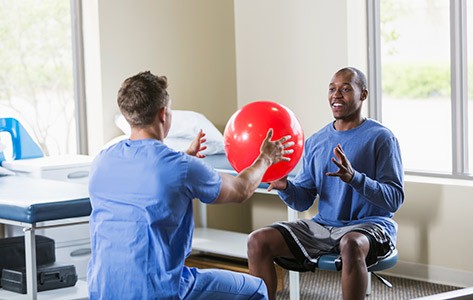Empowering Healing Via Cardiovascular Physical Treatment in the Process of Post-Surgical Rehabilitation
Empowering Healing Via Cardiovascular Physical Treatment in the Process of Post-Surgical Rehabilitation
Blog Article
Cardio-pulmonary physiotherapeutic therapy plays a crucial role in helping patients heal following surgical procedures, especially for those who have experienced operations impacting the cardiac system and lungs. Recovery from surgery can be a challenging process, often accompanied by pain, fatigue, and limited mobility. Yet, with the right approach and support, patients can regain their vitality and enhance their general health. This type of therapy concentrates on enhancing the function of the heart and pulmonary system, which is crucial for a favorable healing.
One of the main goals of cardiopulmonary physical therapy is to enhance heart and lung endurance. After surgery, patients may experience decreased stamina, making everyday tasks feel more tiring. Through a meticulously structured fitness program, physical therapists assist individuals in incrementally increasing their activity levels. This may consist of activities such as walking, cycling, or specific breathing activities. These activities not only aid build power but also boost lung capacity, which is crucial for ensuring that the body receives enough oxygen.
Moreover, cardio-pulmonary physiotherapeutic therapy emphasizes the significance of breathing techniques. Many surgical individuals may find it difficult with full breathing due to pain or restricted movement. Therapists teach patients how to perform profound respiratory activities, which can help increase the lungs and eliminate any mucus that may have built up during the recovery process. Appropriate respiratory techniques are essential to avoid complications such as pneumonia, which can arise if the pulmonary system are not functioning effectively. By concentrating on these techniques, individuals can improve their recovery and general pulmonary health.
Another key component of this type of therapy is education. Therapists provide important information about the healing process, including what individuals can anticipate during recovery. They clarify how to recognize warning signs that may signal complications, helping individuals feel more in charge click for more of their well-being. Understanding the role of exercise in healing allows individuals to take an active part in their healing process. This enablement is crucial for fostering confidence and encouraging a constructive outlook during recovery.
In summary, cardiopulmonary physical treatment is an essential aspect of post-operative recovery for individuals undergoing heart and lung operations. By focusing on enhancing cardiovascular endurance, teaching respiratory techniques, and offering education, physical therapists empower individuals to assume control of their recovery. This specialized treatment not only assists in bodily recovery but also supports emotional well-being, making the process of recovery easier and more manageable. With the appropriate support and guidance, individuals can successfully regain their vitality and return to their daily activities.